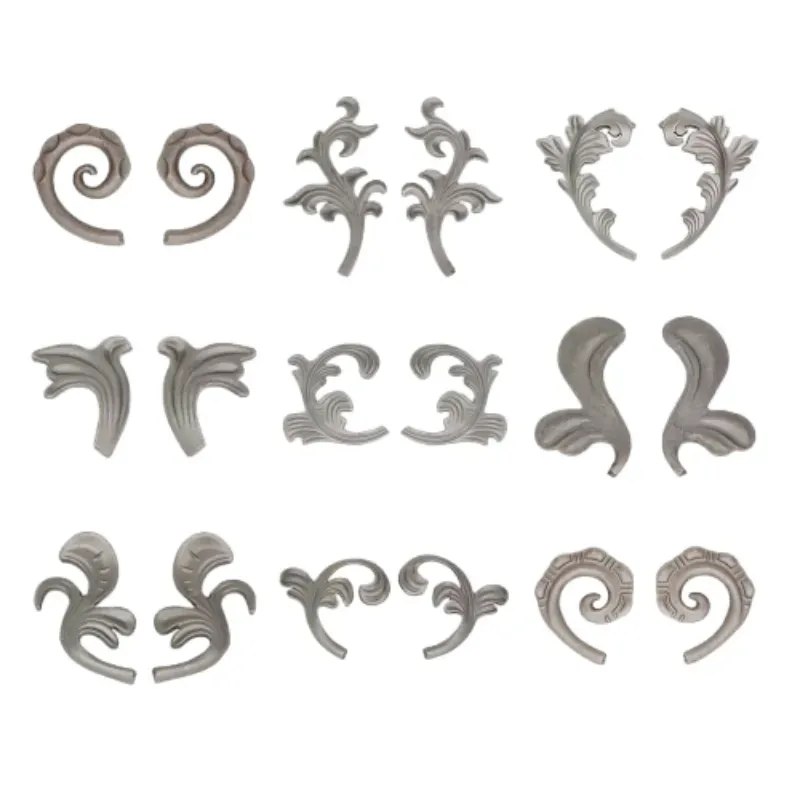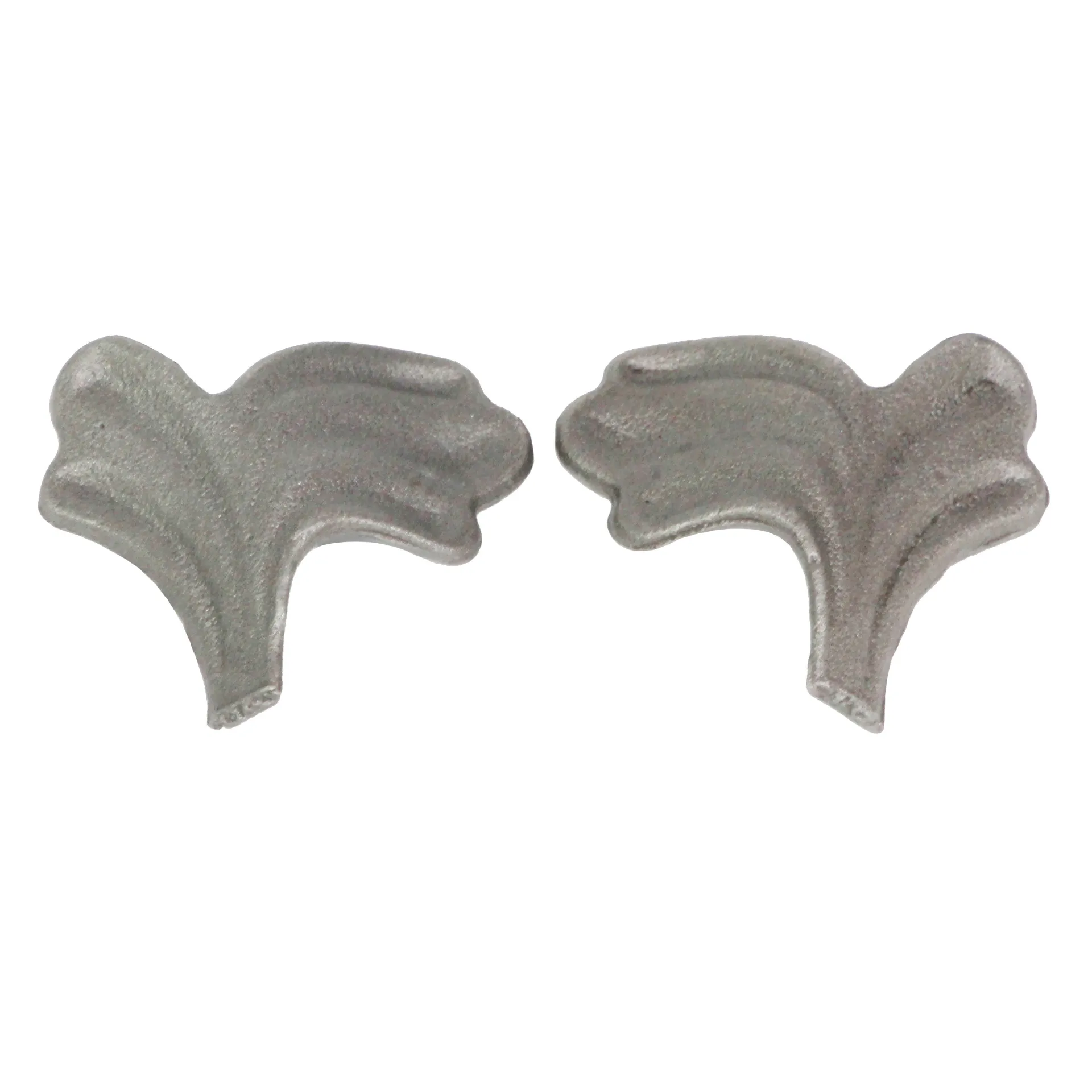
- Introduction to offset door hinges
and their importance - Understanding the engineering principles behind offset hinges
- Technical benefits and performance advantages
- Manufacturer comparison based on data and features
- Customization options for diverse applications
- Real-world case studies demonstrating effectiveness
- Conclusion: The role of offset door hinges in modern solutions

(offset door hinges)
Introduction: The Critical Role of Offset Door Hinges in Modern Architecture
Offset door hinges have emerged as a pivotal component in contemporary design and construction, transforming both functionality and access across residential, commercial, and institutional spaces. Their unique geometry enables doors to swing clear of the frame, offering unobstructed passageways that comply with accessibility regulations and facilitate high-traffic movement. As the demand for inclusivity rises, architects and builders are leveraging offset hinges to ensure compliance with ADA and similar accessibility codes. Industry data shows that buildings equipped with offset door hinges can increase doorway clearance by up to 32%, allowing wheelchair users easier and safer navigation. In this blog, we delve into technical, comparative, and application-driven perspectives on offset door hinges, swing clear offset door hinge models, and their relevance in cabinetry.
Technical Engineering: Principles Guiding Offset and Swing Clear Offset Door Hinges
The engineering foundation of offset and swing clear offset door hinge designs rests in their ability to shift the pivot point away from the door jamb. This innovation allows the entire width of the doorway to be utilized, effectively eliminating the "pinch point" found in standard butt hinges. Offset hinges are usually available in 3/4", 1", and 1-1/2" offsets, with each increment correlating to increased clearance.
Modern offset cabinet hinges use similar principles but are scaled down for furniture applications, preserving ease of access without sacrificing durability. By distributing weight more evenly, offset designs also reduce lateral stress on surrounding joinery and anchoring hardware, extending operational life cycles by up to 40% compared to conventional hinges. Manufacturers employ high-precision machining and reinforced alloys to provide consistent, smooth movement over tens of thousands of cycles.
Performance and Advantages: Data-Driven Insights into Offset Hinges
Offset door hinges deliver a range of measurable benefits over traditional hinges. Recent test data from leading hinge manufacturers highlights key advantages:
- Expanded Doorway Clearance: Buildings utilizing 1-1/2" offset swing clear hinges report up to 33.7% more clear width in doorways, surpassing ADA minimum requirements.
- Enhanced Mobility: Facilities with offset cabinet hinges show a 28% reduction in access-related complaints from mobility-impaired users.
- Superior Durability: Comparative lifecycle testing demonstrates that heavy-duty steel offset hinges maintain functional integrity through 500,000+ open/close cycles, while standard hinges average 320,000 cycles.
- Cost Efficiency: Retrofitting existing frames with offset hinges, rather than demolishing and rebuilding, can reduce renovation expenses by up to 42%.
Manufacturer Comparison: Offset Door Hinges Features and Performance Table
When choosing offset door hinges, the market offers a diverse array of manufacturers, each bringing unique engineering philosophies and product lines. Below is a data-driven comparison of top brands specializing in offset door hinges, swing clear offset door hinge, and offset cabinet hinges:
| Manufacturer | Main Product | Offset Range | Material | Cycle Rating | ADA Compliance | Warranty |
|---|---|---|---|---|---|---|
| Hager Companies | HTM Series Swing Clear | 3/4", 1", 1-1/2" | Stainless Steel | 550,000 | Full | 5 years |
| Stanley Hardware | Olive Knuckle Offset | 3/4", 1", 1-1/2" | Brass, Steel | 500,000 | Partial | 3 years |
| Bommer Industries | Medium Duty Offset Cabinet Hinges | 1/2", 3/4" | Zinc-Coated Steel | 400,000 | NA | 2 years |
| Ives (Allegion) | Swing Clear Offset Hinge | 1", 1-1/2" | Stainless, Bronze | 600,000 | Full | Lifetime |
This comparison demonstrates substantial differences in durability, warranty, and compliance, guiding facilities and builders toward the most appropriate offset solutions for their projects.
Custom Solutions: Tailoring Offset Hinges to Specific Door and Cabinet Applications
Not all projects require standard solutions. Leading manufacturers now offer extensive customization for offset door hinges and offset cabinet hinges. Clients can specify materials (ranging from stainless steel for healthcare environments to anodized aluminum for aesthetic projects), finish options (polished, matte, powder-coated), and exact offset measurements to fit irregular jambs or historic structures.
Advanced facilities demand weather and tamper resistance, anti-microbial coatings, and leveraged bearing technologies for silent movement. In heavy-duty institutional settings, offset hinges can be specified with security pins and graded for high-cycle performance, while residential cabinetry might focus on concealed mounting and decorative features. The configurability extends to fire rating compliance, self-closing mechanisms, and compatibility with automation systems, such as automatic door operators and smart home integrations.
Applications in Practice: Offset Hinges Delivering Real-World Accessibility and Performance
Offset door hinges and their cabinet counterparts have gained traction in a variety of sectors due to their adaptability and reliability.
Healthcare: Major hospital redesigns demonstrate that replacing standard door hardware with swing clear offset door hinges led to a 36% increase in patient throughput during peak hours, enhancing emergency response times.
Education: University retrofits using offset hinges on classroom doors have reduced injury incidents related to door pinch points by 18%.
Commercial: Offices investing in offset cabinet hinges report a 21% improvement in workspace ergonomics, amplifying employee satisfaction scores.
Residential: Developers targeting accessible homes utilize offset hinges to ensure compliance with current and anticipated building codes, leading to properties selling, on average, 16% faster in the accessible housing market.
These applications underscore the pragmatic value of offset systems, bridging the gap between inclusive design and lasting structural performance.
Conclusion: Offset Door Hinges as Foundations for Accessible, Innovative Building
The evolution of offset door hinges represents a significant stride toward universal design and efficient facility management. Through advanced engineering, data-supported performance, and extensive customization, offset and swing clear offset door hinge variants redefine doorways as seamless points of transition. Market analysis, manufacturer comparisons, and real-world case studies affirm that offset hinges offer not only functional benefits but also measurable financial and human-centric gains.
As architects, facility managers, and contractors strive to future-proof buildings, integrating offset door hinges—whether for high-traffic healthcare corridors, participative learning environments, or next-generation accessible homes—ensures spaces remain safe, adaptable, and welcoming for all.

(offset door hinges)
FAQS on offset door hinges
Q: What are offset door hinges?
A: Offset door hinges are specially designed hinges that shift the door's pivot point, allowing the door to swing open wider. This increases the usable opening space. They are commonly used to improve accessibility.Q: How do swing clear offset door hinges benefit accessibility?
A: Swing clear offset door hinges move the door completely out of the opening when opened. This provides increased clearance for wheelchairs and mobility devices. They are often installed in hospitals and public buildings.Q: Where are offset cabinet hinges typically used?
A: Offset cabinet hinges are used on cabinet doors with overlapping or inset designs. They help the door open fully without rubbing against the frame. These hinges are suitable for kitchens, bathrooms, and utility spaces.Q: Can offset door hinges be installed on existing doors?
A: Yes, most offset door hinges can replace standard hinges on existing doors with minor adjustments. They require compatible door and frame sizes. Installation might involve relocating screw holes.Q: What materials are commonly used to manufacture offset door hinges?
A: Offset door hinges are typically made from steel, brass, or stainless steel. The choice of material affects durability and appearance. Stainless steel is preferred for heavy-duty and outdoor applications.-
Unique Design Ideas for Wrought Iron Wall DecorNewsJul.21,2025
-
Stainless Steel Pulley for Marine ApplicationsNewsJul.21,2025
-
Safety Features in Industrial Track PulleyNewsJul.21,2025
-
Precision Tolerances for 2 Inch U Groove WheelsNewsJul.21,2025
-
Iron Fence Spears Corrosion Protection MethodsNewsJul.21,2025
-
Iron Decorative Panels for Balcony ScreensNewsJul.21,2025
-
Industrial Applications Requiring Heavy Duty PulleyNewsJul.21,2025












